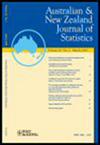成对匹配在实验设计中对发生率结果的作用
IF 0.8
4区 数学
Q3 STATISTICS & PROBABILITY
引用次数: 0
摘要
我们考虑在非参数一般反应模型下评估具有发生率(二元)结果的双臂随机实验设计的问题。我们的两个主要结果是,先验配对设计是(1)在包括完全随机化的所有块设计中,以均方误差衡量的最佳设计。(2)这种配对设计是minimax的,即在对抗响应模型下,它提供了最小的均方误差。理论结果得到了模拟和临床试验数据的支持,在这些数据中,我们证明了在现实条件下成对匹配设计的优越性能。本文章由计算机程序翻译,如有差异,请以英文原文为准。
The role of pairwise matching in experimental design for an incidence outcome
We consider the problem of evaluating designs for a two-arm randomised experiment with an incidence (binary) outcome under a non-parametric general response model. Our two main results are that the a priori pair matching design is (1) the optimal design as measured by mean squared error among all block designs which includes complete randomisation. And (2), this pair-matching design is minimax, that is, it provides the lowest mean squared error under an adversarial response model. Theoretical results are supported by simulations and clinical trial data where we demonstrate the superior performance of pairwise matching designs under realistic conditions.
求助全文
通过发布文献求助,成功后即可免费获取论文全文。
去求助
来源期刊
CiteScore
1.30
自引率
9.10%
发文量
31
审稿时长
>12 weeks
期刊介绍:
The Australian & New Zealand Journal of Statistics is an international journal managed jointly by the Statistical Society of Australia and the New Zealand Statistical Association. Its purpose is to report significant and novel contributions in statistics, ranging across articles on statistical theory, methodology, applications and computing. The journal has a particular focus on statistical techniques that can be readily applied to real-world problems, and on application papers with an Australasian emphasis. Outstanding articles submitted to the journal may be selected as Discussion Papers, to be read at a meeting of either the Statistical Society of Australia or the New Zealand Statistical Association.
The main body of the journal is divided into three sections.
The Theory and Methods Section publishes papers containing original contributions to the theory and methodology of statistics, econometrics and probability, and seeks papers motivated by a real problem and which demonstrate the proposed theory or methodology in that situation. There is a strong preference for papers motivated by, and illustrated with, real data.
The Applications Section publishes papers demonstrating applications of statistical techniques to problems faced by users of statistics in the sciences, government and industry. A particular focus is the application of newly developed statistical methodology to real data and the demonstration of better use of established statistical methodology in an area of application. It seeks to aid teachers of statistics by placing statistical methods in context.
The Statistical Computing Section publishes papers containing new algorithms, code snippets, or software descriptions (for open source software only) which enhance the field through the application of computing. Preference is given to papers featuring publically available code and/or data, and to those motivated by statistical methods for practical problems.

 求助内容:
求助内容: 应助结果提醒方式:
应助结果提醒方式:


